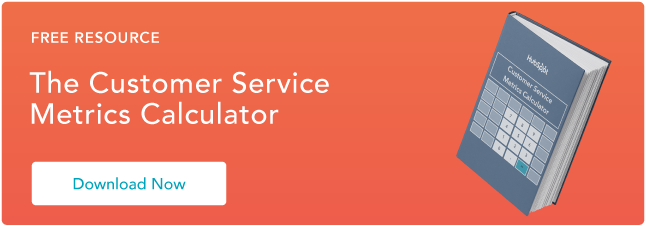eNPS is a powerful, yet simple tool that monitors and improves employee loyalty, satisfaction, and engagement. It works similar to traditional NPS; however, this information enhances the day-to-day workflow of your team. By doing so, employees become more productive because there are fewer impediments in their work.
In this post, let's dive into eNPS and discuss everything you need to know to reap the benefits of it at your company.
What Is eNPS?
Employee Net Promoter Score is a feedback metric derived from the employee survey question below.
"On a scale of zero to ten, how likely is it that you would recommend this organization as a place to work?"
To calculate the score, the responses are first divided into three categories.
- 9–10: Promoters -- These are your most positive, motivated, and satisfied employees.
- 7–8: Passives -- These employees are neutral. They're generally content but not fully committed to the organization.
- 0–6: Detractors -- These employees won't recommend your business and may be dissatisfied in varying degrees.
Next, a little math. Subtract the percentage of detractors from the percentage of promoters. That number is your organization's eNPS -- passives aren't counted.
Here's an example. If 55% of a company's employees are promoters and 10% are detractors, the company's eNPS is 45.
That might not sound like a very high score, but the possible range is from -100 (all employees are detractors) to +100 (all employees are promoters), so 45 is a very good score. Each industry has different standards, but anything above zero is usually considered a passing grade and an eNPS of 50 or better is excellent.
Now that you know how to calculate eNPS, let's review what you can do with this data.
How to Use eNPS Data
A single survey question isn't enough to tell you what to do with the answers. That's why eNPS surveys include a second question; after giving their numerical rating, employees are asked why they chose that response.
Answers to the second question reveal how people really feel about their workplace, which tells administrators what's working well and where there's room for improvement. Of course, none of this information is useful if it isn't totally honest, which is why the eNPS system makes it clear to employees that all responses are anonymous.
And, while analyzing eNPS will help leaders make informed decisions, it doesn't have to be a tedious process. The right HRIS software can quickly provide intelligent feedback analysis and detailed reports that make it easy for administrators to identify and track common issues.
These are only a few advantages that eNPS provides. Read on to learn more benefits of eNPS.
Benefits of Measuring eNPS
In addition to loyalty, satisfaction, and engagement, measuring and improving eNPS can help your business boost other metrics, including the ones listed below.
- Performance
- Productivity
- Profits
- Employer brand
- Retention
- Innovation
- Creativity
There's also another benefit that's less tangible than the ones listed above: improved morale. Employees value being asked what they think. Knowing their voice is heard helps them feel included and respected, especially when they see the organization follow through and act on their suggestions.
Now that we've discussed the benefits of eNPS, you're probably interested in adopting it for your business. But, before you begin, let's move on to the next section and review some best practices for implementing this system.
Tips For Conducting an eNPS Survey
For the most accurate and insightful results, you need as many employees as possible to participate in your eNPS survey. The more feedback the better.
The most convenient and versatile way to conduct an eNPS survey is by email. But don't expect a single email to get everyone to participate right away. Help your busy workforce remember to take the survey with reminders on internal websites, chats, bulletin boards, etc. Monitor the responses and send additional reminders to employees who still haven't taken the survey.
Additionally, after you've calculated your first eNPS your surveying efforts aren't over. An eNPS is a snapshot of how your employees feel at a single point in time. It's important to repeat the survey regularly so you can identify trends and monitor progress. How often depends on your firm's unique circumstances, but you could start with quarterly surveys and then adjust as needed.
If you're noticing that your score is lower than expected, use the tips in the next section to improve it.
How to Improve Your eNPS Score
Wouldn't you love to have an eNPS that's head and shoulders above your competitor's?
That sounds great, but it's a trick question.
Comparing your organization's eNPS with someone else's is like comparing apples and oranges. The factors that influence eNPS vary so much from company to company that comparisons aren't very meaningful.
Instead, compete with yourself by establishing a benchmark for eNPS then measure your improvement over time. Here are four steps that your management can take to get your eNPS moving in the right direction.
1. Adopt eNPS tools.
Though individual results are anonymous, eNPS tools can filter survey findings and reveal differences based on department, location, demographics, and other criteria.
2. Gather more employee feedback.
Gain deeper insight into employee satisfaction by using follow-up surveys and interviews to ask more specific and targeted questions. Remember, you can learn from listening to all your employees' perspectives whether they're promoters, passives, or detractors.
3. Be transparent with your results.
Sharing survey results with your employees and inviting their recommendations for next steps helps them feel trusted and involved in the improvement process. And, when employees feel included, it increases their engagement with your organization's culture.
4. Designate resources for improving eNPS.
Knowing how to improve your eNPS is only half the battle. To actually make it happen, someone in your organization needs to be put in charge of setting priorities and charting the course. Whether it's an executive, an HR professional, or a committee, they should create a plan with goals, strategies, assignments, a timetable, and a budget.
Raising your eNPS is an ongoing process that can take considerable effort, but the rewards are worth it. Every individual in your workplace can and should have the opportunity to be involved. As employees and leaders work together to build a better culture and more satisfying workplace, you may see a surprising number of passives, and even detractors, become enthusiastic promoters who are dedicated to your company.
Net Promoter, NPS, and the NPS-related emoticons are registered trademarks, and Net Promoter Score and Net Promoter System are service marks, of Bain & Company, Inc., Satmetrix Systems, Inc. and Fred Reichheld.
NPS
.png?width=112&height=112&name=Image%20Hackathon%20%E2%80%93%20Vertical%20(85).png)


![How I calculate net promoter score [formula & examples]](https://53.fs1.hubspotusercontent-na1.net/hubfs/53/%5BUse-Oct-14-2025-10-16-33-2257-PM.webp)



.jpg)



![NPS Question: The Secret to Getting It Right [+ 5 Best Practices]](https://53.fs1.hubspotusercontent-na1.net/hubfs/53/nps%20question_featured-1.jpg)
